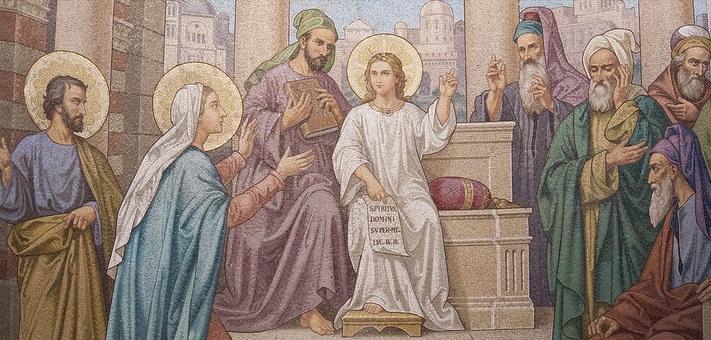Commentary on 1 Samuel 2:18-20, 26
In some ways I am tempted to dare you to preach on this text, because it is, for lack of a better phrase, pretty challenging. Challenging in its brevity, challenging in terms of finding a point of purchase—where to begin, how to find the application, discern what is at stake—challenging in that it is so far removed from us both culturally and practically.
What is more, the most obvious point of tension in the text, theologically, is around the gift and repayment question. In the story, the prayer is that Hannah will be repaid (the Hebrew here is śûm, which simply means “give,” although giving in kind does seem to be the gist of things) for the gift she had made to God. Actually, it is that her husband Elkanah would be repaid through Hannah (even though it was Hannah who decided to see him dedicated to the Lord). Either way, there is a convoluted economics going on here, from any number of perspectives. Indeed, one may well ask, What is the exchange rate for one’s firstborn? (As it turns out the answer is three sons and two daughters, see 1 Samuel 2:21 which for some reason is cut off from the story; but, maybe more on that later.)
So, yeah, I dare you: make a silk purse out of this pig’s ear.
What, then, do we make of this little story?
I want to suggest that, coming as this story does on the first Sunday of the Christmas season, a fruitful focus might be found in thinking about the young Samuel, and what God makes of him.
The final verse of our reading is, “Now the boy Samuel continued to grow both in stature and in favor with the Lord and with the people.” The key to this verse and what it means to us lies in part back in the already mentioned (as skipped) verse 21, at the end of which we read, “And the boy Samuel grew up in the presence of the Lord.”
Age, experience, years, none of these are the key to this priest and prophet in the making. What mattered was that he was “in the presence of the Lord,” And so even the “boy Samuel” has the favor of the people, and is held in high stature. It is the Lord’s presence that enables Samuel to grow and become what is to become, to serve the way he and only he can serve, despite his youth.
This can be hard for other, older, wiser heads to handle. Perhaps this is why, while we may be quick to acknowledge that the children are the future of the church, we tend to keep that future in place as long as possible. The reality, that the children are every bit as much the present of the church as the rest of us, can be hard to make sense of.
But this is not an uncommon theme in the Scriptures. Consider Jeremiah, who, upon receiving his first vision from God said,
“Ah, Lord God! Truly I do not know how to speak, for I am only a boy.”
But God responded,
“Do not say, ‘I am only a boy’;
for you shall go to all to whom I send you,
and you shall speak whatever I command you.
8 Do not be afraid of them,
for I am with you to deliver you,
says the Lord” (Jeremiah 1:6-8).
Or Timothy, whom Paul counsels, “Let no one despise your youth, but set the believers an example in speech and conduct, in love, in faith, in purity” (1 Timothy 4:12).
Or again Jesus, who said that not only ought we to include the young, but we ought to be more like them:
“Let the little children come to me; do not stop them; for it is to such as these that the kingdom of God belongs. 15 Truly I tell you, whoever does not receive the kingdom of God as a little child will never enter it” (Mark 10:14-15).
What, then, do we take away from this text, and how will it preach?
What if “stature” and “favor” are about childlike wonder?
What if this, as much or more than anything else, is the key to a faith that is energetic (Galatians 5:6), active, and effective through love?
Again, in this season as we bask once more in the birth of salvation—birthed for us as it is through an infant-God—what if our faith were to look more childlike: more like the joyful, wondering, exuberant reaction of a child given their first present in colorful paper and wrapped up in bows?
We can learn something, it seems to me, about “stature” and “favor” and what it means to be a child of God, by looking to the children, and learning from them.


December 26, 2021